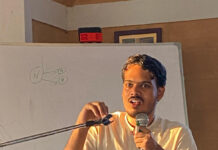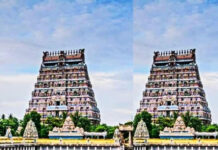
What makes Vedanta challenging to learn? It’s not hard to learn, but we think it is because the general discourse is in a language with many Vedantic technical terms.
It is quite natural. Any philosophy cannot survive without its own technical terms. Advaita Vedanta is an ancient philosophy. It has been discussed here for more than 1,200 years. There are many great scholars, saints, and various schools of thought in it. So naturally it becomes profound and large with many intricacies and inner debates. Having discussed philosophy for over a century naturally leads to the development of numerous technical terms. Our past deeply roots these technical terms. Learning technical terms with their precise meanings and different shades of meaning is really tough.
For example, “avidya” is a technical term in Vedanta used by various schools of it, and there are slight variations in defining it in each school. Without understanding those differences, we cannot grasp the true essence of Vedanta; however, we can gain insights through past discourses. These are the complications we are facing while we listen to Vedantic discourses.
However, it is important to understand that the core concept of Advaitic Vedanta is not very difficult. We can explain this cosmic vision in five or ten minutes using simple words. There’s a popular saying that explaining Advaitic Vedanta is very tough, but knowing Advaita Vedanta is effortless. It has a profound vision of oneness, ‘the absolute,’ which is the ‘one’ inside the ‘many’ of this universe.
The concept of oneness is the core vision of Advaita. And Advaita named it as Brahman. That means a powerful expression of wonder, nothing more. It’s not a god. It’s only a philosophical assumption. If you are sensitive enough to understand the truth in the nature surrounding you, you can easily perceive the presence of ‘the absolute.’ It represents the endlessness that lingers in everything and the irrefutable truth that lurks behind it all. We call it Isha, i.e., Isvaran. Vedantic thought names the absolute existence of that Isvaran as Brahman.
It’s very easy to feel it while you are standing before a mountain, or before a sea, or before a small plant sprouting its tiny leaves from the earth, or while witnessing a small worm pushing its tiny body towards a direction like a small wave. I can feel the immense force of a planet rushing towards its everlasting destiny in a perennial circle.
That’s what our poet Subramanya Bharati expressed in a wonderful poem. We can explain Bharati’s outstanding Vedantic vision in two lines. One is “The birds filling the sky are nothing other than me”, and another one is “Ants are pulling a dead worm.” The meteor is dragging its tail, spanning millions of kilometers, as it swiftly speeds through the space. Both energies are created by her—Sakti, the absolute energy”.
Exactly, that’s the vision of Advaita. I think any Indian can easily understand it because it is already in the language and in the natural wisdom of India. Advaita is actually trying to logically explain it with objective reasoning and figurative speech. Advaita tries to argue for it with the opposing sides. The logic of Advaita stems from its extensive arguments with Buddhism, Jainism, and other visions. In fact, the primary text of Vedanta, the Brahma Sutra, provides numerous logical explanations and arguments against the opposing philosophical views of its time. Through that negation, it created its own logical system.
Thus, experiencing Advaita is quite simple, while engaging in logical arguments requires thorough study. Before learning the logical system of Vedanta, one has to feel the core vision of Vedanta by himself through meditation and poetry, from nature or from himself; then he can easily enter into the realm of Vedantic philosophy.












